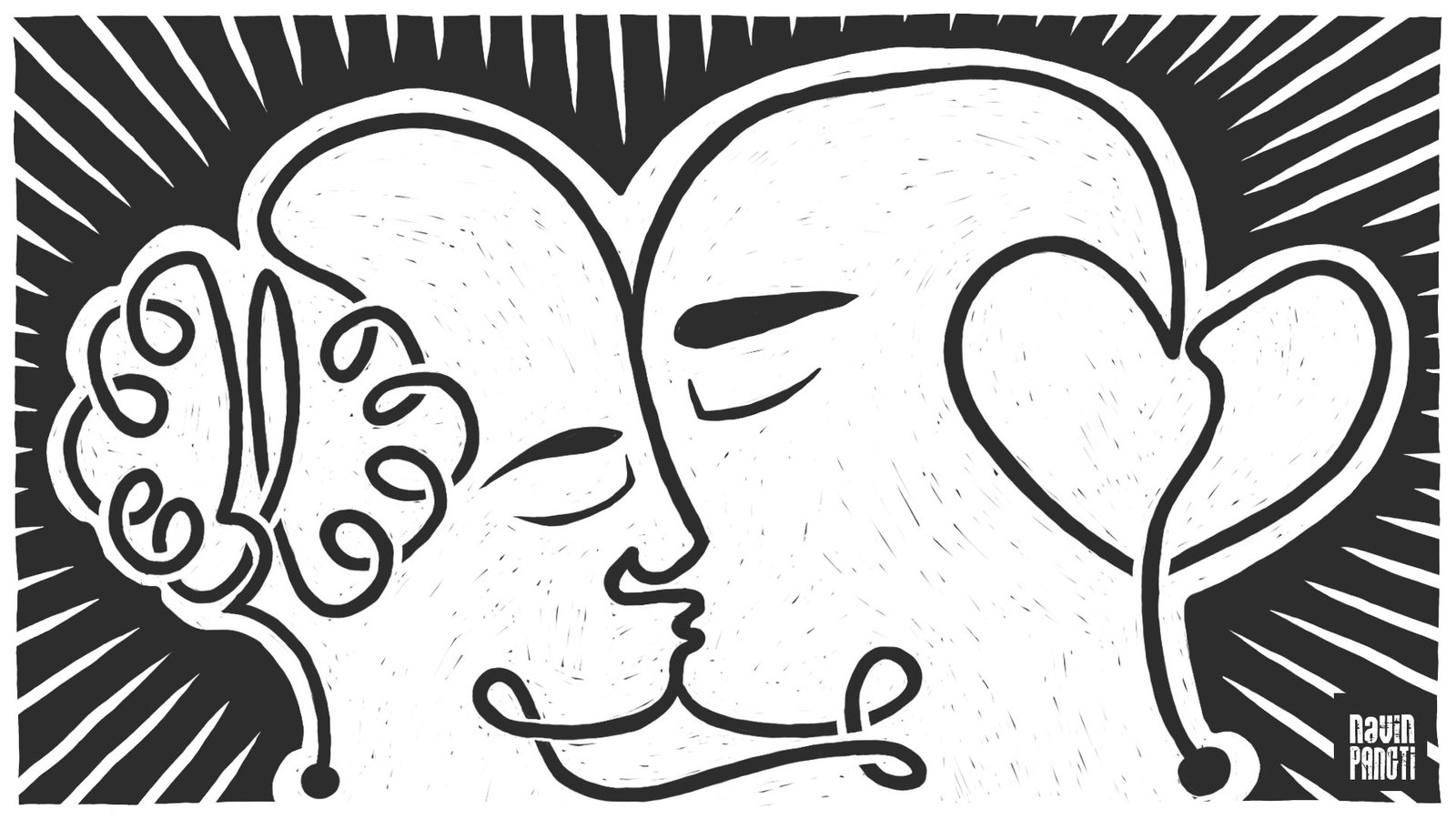The golden mean principle of design
The world is choking with multiplicity of models and principles. Yet I propose one more – A humane design approach called ‘The golden mean principle of design’. I would resist calling it unique because this is how design was always meant to be.
There are multiple ways on analyse, contextualise, interpret or deconstruct a design situation. If we were to classify these various ways then they would largely fit into two slots – a headful one and a heartful one.
The headful approach

The world seems to have a biased towards this approach. How deep rooted is this bias can be easily seen in the overwhelming support for quantitative research in lieu of semiotic (qualitative) research even though semiotic research seems to unearth more useful insights. Be it big business decisions or environmental clearance for an infrastructure project, they all seem to be based on statistics rather than relying on qualitative understanding of how these decisions will play out.
This quantitative approach thrives on being rational, analytical, direct and assertive. It is an outward looking approach which seeks accuracy and predictability. It relies on mathematical models and data analysis to predict outcomes. Often constraint by time limit, to me this approach seems to be somewhat in a hurry.
Another reason for this bias could be the facts that the data based decisions are considered to be ‘scientific’. ‘Measurements’ are effectively used to block counter arguments while also ensuring that the axe does not fall on the decision maker. Many a times I feel that the CEOs commission leading consulting firms to undertake studies and create reports only to justify their gut feel or a decision they have already taken. It is not a secret that mathematical models are re-engineered for favourable results, or environmental studies are executed backwards.
However, this does not mean that quantitative research and statistics do not carry value. They have their unique place in design and business decision making process. They are much need practices that help us navigate safely in complex scenarios for making favourable and timely decisions.
The heartful approach

A qualitative approach, it amounts to being intuitive, creative and innovative. It is an inward looking contextual approach which aspires to connect and relate. Nurtured by empathy, it comes across as sensitive, patient and emotional. It is about discovering the bigger picture.
Most of the creative professionals seem to favour this approach. At times their bias can be so high that they simply refuse to even temporarily consider the observations or recommendation of a headful approach. No wonder, designers are often at loggerheads with other teams of the organisation, especially the marketing and technology teams which lean heavily towards headful approach.
Being a creative professional, I myself have a bias towards this approach. When I empathise with a situation with closed eyes, I can almost see the solution rolling out in real world – as if it was a film. And if I ‘see’ something which the data contradicts, I choose to undermine the data over my visualisation.
The golden mean approach
The golden mean principle of design is an approach based on the principle of golden mean laid down by Aristotle, some 2500 years ago. Golden mean talks about striking a balance between two extremes.

Aristotle theorised that for something to be morally good means that it strikes a balance between two vices. These two vices are the vice of excess and the vice of deficiency. For instance, too much of courage would lead to recklessness whereas too little a courage would mean cowardice. The virtue called courage lies somewhere between these two vices. To strike this balance, one needs intellectual reasoning and practice.
While this balance comes across as a good idea, many academicians and philosophers consider it to be a logical fallacy. They are unwilling to accept that truth is just a matter of finding the balance between two extremes. Calling these extremes false, they are unwilling to buy the argument that a situation can only be understood with respect to two extremes, and that virtue lies is making these two seemingly false extremes work together. Despite this, there seems to be an agreement that the principle of golden mean will work if the two extremes truly exist. If recklessness is indeed an excess of courage and cowardice is indeed a deficiency of courage then courage is indeed the balance of the two.
The idea of golden mean also resonates with a well-known saying, often attributed to Gautam Buddha, that excess of anything in our life is poison. Buddha is revered for following the middle path, a path that leads to enlightenment by avoiding the extremes. The two extremes, in this case, are self-indulgence and self-renunciation.
This proposition – the golden mean principle of design – considers the two extremes as the headful approach and the heartful approach. Right from the act of creation and innovation to building relationships with life in general, it is the right mix of these two approaches which makes all the difference. While design can be led by being user centric or task centric and so on… design thoughts swim on a wider canvas and demand a more humane, context centric approach. Here, context is not just what is immediate but also everything that will get impacted when an idea is realized. The heartfelt context is as valuable as well-researched headful content.
While designers need to follow the golden mean principle of design, the business analysts, marketing folks and decisions makers need to understand, appreciate and internalise the process. Everyone needs to come out of their comfort zones and biases. And frankly, CXOs looking solely at spreadsheets and data visualisations are not going to lead us anywhere.
In order to harness the true potential of golden mean principle of design, the trick is to not solely depend on metricised models or checklists or processes for making decisions. It is essential to objectively and empathically evaluate every design situation through the prism of context. Every method, no matter proposed by who, is subject to contextual evaluation. There is nothing called an absolute truth. While talking about the golden mean, Aristotle himself suggested that the middle ground could be biased towards one extreme. And that bias flourishes as the golden ratio, also known as the divine proportion.
The application of golden mean principle of design is not limited to any chosen field of design, neither is it limited to the field of design alone (as ‘design’ is commonly understood). In many ways, golden mean of design is a multi-dimensional multi-disciplinary approach that can assist us in evaluation and design of people policies, processes, strategies, etc. It can also help us in understanding and dealing with socio-political and socio-economic issues, challenges of development, etc.
To conclude, golden mean principle of design is not a syntactic methodology but a balanced semiotic worldview that seeks primacy of context. It is the ‘right’ balance of heartful and headful approaches which, together, help uncover the true beauty of human mind.
***
An article on the application possibilities of golden mean principle would be published soon. To keep track please follow pangti.com on facebook or twitter.














